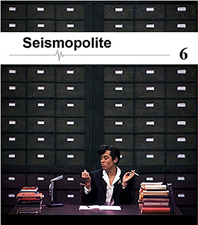December 28, 2013
Future Objects / Object Futures:
Object Oriented Ontology at dOCUMENTA(13) and Beyond
Written by Kathryn M. Floyd
Summer 2012’s dOCUMENTA(13) breathed life into the over fifty-year institution that is Kassel, Germany’s most significant contribution to contemporary art. Carolyn Christov-Bakargiev, along with a host of other “agents,” organized the thirteenth edition of this international, twice-a-decade “biennial.” Together, they envisioned an exhibition without a theme, a “non-concept,” that operated as a catalyst for reconsidering art, history, objecthood, and exhibition-making, in addition to other critical questions about ecology, human rights, war, trauma and globalization, offered by the exhibition’s long roster of contemporary artists.[1]
The organizers understood dOCUMENTA(13) as a temporally, spatially, and conceptually open-ended network of paradoxical ideas, objects, spaces, and situations “driven by a holistic and non-logocentric vision.... (that) recognizes the shapes and practices of knowing of all the animate and inanimate makers of the world, including people.”[2] This non-anthropocentric exhibition about the natural, social, economic, ideological, and historical complexities of the world considered all things and their infinite interconnectedness across space and time. Spread across seven venues and twenty sites in and around Kassel, including a large park punctuated with almost fifty displays, and events in Afghanistan, Egypt, and Canada, dOCUMENTA(13) seemed to be the “unruly organism” critic Roberta Smith deemed it.[3] Its diffuse topography integrated the urban landscape itself (“life,” one might say) into the exhibition (and further embedded the event into the city) creating a dynamic matrix. For the (human) spectator, the idea of consuming dOCUMENTA(13)’s enormity, of seeing it completely, was overwhelming and not feasible by design. In addition to the hundreds of projects spread over four countries, dOCUMENTA(13) also presented unpublicized exhibits, surprise performances, disappearing artworks, chance occurrences, and simultaneous happenings across its terrain. The impossibility of locating dOCUMENTA(13) within the expected framework of complete consumption, or as a “whole,” produced profound moments of awe and exhilarating intellectual challenges, but also bouts of frustration. Visitors approaching from any direction could at best only encounter the exhibition as a fragment; the rest remained a mystery.
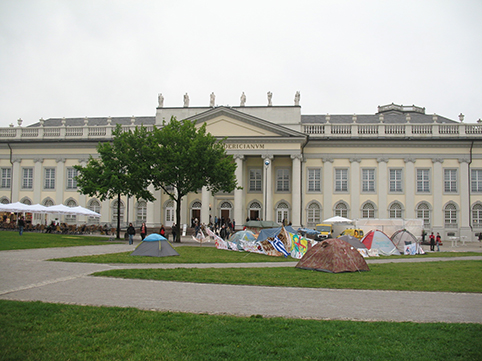
Against this boundlessness, the seemingly contradictory theme of discrete objects, in particular of their “realness” and materiality, kept appearing. Beyond the display of “things” all exhibitions create (“to exhibit” necessitates the display of something, even if immaterial), many of the objects included at dOCUMENTA(13) themselves raised questions about the character of objecthood, substance, materiality, dematerialization, presence, absence, and longing. Examples included: Emily Jacir’s photographs of looted Palestinian books catalogued in the Jewish National Library as “abandoned property;” Wael Shawky’s elaborate marionette recreation of the historical Crusades; Massimo Bartolini’s untitled wave pool; Pierre Huyghe’s Untilled, an outdoor encounter of plants, water, soil, a beehive-headed sculpture, and a roaming pink-legged dog who might be spotted in the park; Yan Lei’s paintings, “erased” one by one over the summer; Ryan Gander’s “empty” room of gentle breezes; and Alexander Tarakhovsky’s continuously multiplying DNA. Many projects dealt with the nature of substance, the boundaries between objects, changes of state, status, and location, the integration of objects into larger wholes or their fragmentation into component parts, presence and absence, and disappearance and display.
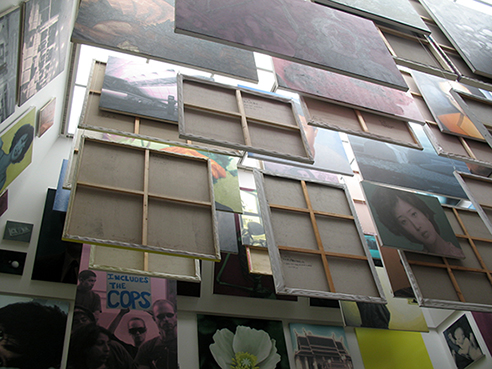
The case of “El Chaco,” more than any other project, evoked real political questions surrounding these issues.[4] Guillermo Faivovich and Nicolás Goldberg, as part of their on-going Guide to Campo del Cielo, proposed the temporary movement of the meteorite El Chaco, a dense iron object that landed in Argentina four thousand years ago, to Kassel’s Friedrichplatz where it would come into contact with Walter de Maria’s Vertical Earth Kilometer (1977) and trees from Joseph Beuys’s 7000 Oaks (1982). But individuals in Argentina, including members of the Moqoit community, the indigenous people for whom the object, still in the Campo del Cielo, is a part of their cultural heritage and religious practice, deemed dOCUMENTA(13)’s plan a neocolonialist act that ignored the rights of the Moqoit people and protested the project.[5] The artists and exhibition organizers acquiesced and instead presented documentation about the project and the subsequent response at the actual exhibition.
Christov-Bakargiev discussed El Chaco’s canceled trip in The Book of Books, a compendium of texts published for dOCUMENTA(13), where she outlined and ultimately upheld the protestors’ objections to the move, but at the same time speculated about what it might mean to also “see things from the position of the meteorite.” “It had traveled through vertiginous space before landing on Earth and settling. Would it have wished to go on this further journey? Does it have any rights, and if so, how can they be exercised? Can it ask to be buried again, as some of the Moqoit argue, or would it have enjoyed a short trip to an art exhibition, rather than a science or world’s fair?”[6] The independent agency she affords El Chaco mirrors other unusual questions Christov-Bakargiev posed publically, questions that occasionally gave the press fodder for a few laughs. In press conferences and interviews she mentioned the culture of tomatoes, voting rights for strawberries, and the emancipation of dogs. To some, such statements, especially in light of the controversy surrounding El Chaco, seemed to skirt the border of unethical, anti-humanist positions that favored “objects” over “subjects.”
Christov-Bakargiev’s statements were actually (potentially ineloquent or irresponsible) attempts to foster a non-anthropocentric event whereby people are no longer the measure of all things, but one of many equal elements of the total environment. Her anthropomorphizing of dogs and strawberries as a shorthand for a level hierarchy of being, along with dOCUMENTA(13)’s overarching focus on objecthood, led some to identify the influence of a radical metaphysics called object oriented ontology at the exhibition.[7] Graham Harman, one of the key philosophers of OOO, as it is abbreviated, indeed contributed an essay to dOCUMENTA(13)’s anthology[8] that describes how each and every thing, material or immaterial, large or small, atomized or aggregated, is an individual object, from typical objects (a meteorite) to people, places, categories, ideas, or suggestions (even falsehoods or fantasies). As Harman succinctly puts it, “anything that is real can be regarded as an object.”[9] In his essay “The Third Table” he elucidates this concept by revising Eddington’s famous comparison of two tables. Harman contrasts science’s view of the table, which sees its reality as a collection of atoms, with the perspective of the humanities, which considers a table’s existence to be dependent on human perception. “The scientist reduces the table downward,” he writes, “to tiny particles invisible to the eye; the humanist reduces it upward to a series of effects on people and other things...The real table is in fact a third table lying between these two others.”[10] It is “an intermediate being found...in a permanent autonomous zone where objects are simply themselves...[this] reality of things lies outside the grasp of human knowledge.”[11]
Although OOO is in no way monolithic – and its many debates lie beyond the scope of this text – there is general agreement about certain core issues, most important the rejection of reality defined through human perception (à la Kant). The tree falling in the forest indeed makes a sound, even if no one (human) hears it. To underscore the independence of reality from human understanding, OOO describes every real thing (material or immaterial) as a complete, finite object with an existence of its own. An apple, a person, a corporation, a theory, and a dream may all be considered autonomous objects ontologically equal to each other. The hierarchies that understand the “real” to be fundamental elements, indivisible substances, or essential qualities or that define “knowledge” only as human forms of knowing are now “flattened” to create a “democracy of objects,” all equal despite differences of scale, composition, or duration.[12] Objects, although closed systems, can be made of other objects, although amalgamation does not reduce or increase the objecthood of the contained or the container. Each page of a book is as much an object as the book in which it is bound, the story it tells, the library that owns it, the librarian who shelves it, and the database that catalogues it. All these objects are also identical in their ability (or inability) to come into “contact” with other objects or generate potential effects and impacts. The nature of this agency, efficacy, and interaction however is debated in the OOO community. Theorists mostly agree that objects in contact with each other relate only in limited, incomplete ways. No object (even a human object) can ever completely penetrate the essential ontological boundaries of another object or fully know it. Therefore, we only ever perceive and translate fragments or surfaces of other objects; our understanding of reality always remains speculative.
Outside of philosophy, OOO informs fields like ecology where it questions human-centered dualities like “nature” and “culture.”[13] OOO has also entered the arena of art, where the (aesthetic) object is the field’s primary organizing concept, philosophically, economically, politically, and historically. Along with “thing theory,” developed by Bill Brown and others, and Marxist concepts of reification and commodity fetishism, OOO is yet another position from which to question the field’s first principles and basic structures. And, as contemporary artists and theorists continue to work with critical and conceptual strategies, non-traditional forms and materials, and transdisciplinary approaches, as well as explore the complex ways objects can relate to their contexts, spectators, and to each other, OOO provides another route for considering objecthood and reality that floats between radical cultural relativism and analytic forms of naturalism and idealism. Thus, the application of OOO within the field of art continues the essential dialogue about the relationships between representation and reality.
On the other hand, the many tenuous and nuanced interactions between subjects and objects which are necessary for defining the modern concept “art” (for example relationships between creators and their works, spectators and displays, gazes and images, collectors and commodities, artworks and interpretations) raise difficult questions about the correctness of applying OOO to humanistic contexts like the art world. Is the philosophy able to operate at this level or does it better describe a metaphysical realm beyond exhibitions, artworks, curators, artists, and spectators? Can its flatness account for both art’s subjects and objects and make room for explorations of the ideologies and power relationships inherent in visual imagery and cultural economies? And what becomes of human subjecthood (and in turn the related fields of ethics, the humanities, and aesthetics) in such an ontology? This problem, related to OOO’s ability to subjectivize objects by making them autonomous agents on a par with human actors or, conversely, to objectivize human subjects by structuring them as objects, was noted by a handful of dOCUMENTA(13) critics. Steven Henry Madoff saw an affirmative kind of uncanny or “constitutive strangeness” in these subject/object tensions rather than an indication of problematic ramifications for political, social, or economic systems. Instead of locating an ethical dilemma in the equalized agencies of El Chaco and the Moqoit, for example, he noted an emancipatory potential in the “liberation of an object’s identity,” as well as the possibilities for the (human) spectator to better acknowledge an object’s internal life and increase one’s “sensitivity to things other than ourselves.”[14] Daniel Birnbaum also pointed out something productive in being attuned to “the true nature of the things that surround us,” but also wisely asked “if we end up attributing human subjectivity to nonhuman actors, isn’t there a risk of making anthropocentrism a model for the rest of the world, rather than eradicating the problem?”[15]
Advancing such anthropocentric rhetoric, like the idea of a meteorite enjoying an exhibition, rather than a level of object-based orientation, also became useful for dOCUMENTA(13)’s definition of itself, according to Birnbaum. Specifically, organizers fashioned a condensation of the “thought lines” of the exhibition in a display called The Brain, a collection of objects that materialized the show’s “non-concept,” just as a catalogue, logo, or photograph translates the exhibition’s enormity into a consumable object. Implying a vital subjectivity to animate the entire event, the glassed in Brain was an exhibition-within-the-exhibition installed in the rotunda of Kassel’s Museum Fridericianum. The display gathered objects related to the projects of the larger exhibition or items that were symbolic of the broader themes, questions, and histories engaged by the event. While linked to the larger whole, these objects also offered their own logics and continuities within the space: a marionette from Cabaret Crusades, 3000 year old Central Asian figurines, bottles from Giorgio Morandi’s studio and a selection of his still lifes, a river stone and Giuseppe Penone’s marble replica, parts of Beirut’s National Museum melted from shelling, Man Ray’s Indestructible Object, photographs of Lee Miller in Hitler’s bathtub, along with some of the historical objects seen in the photograph such as a porcelain statue, a perfume bottle, and Eva Braun’s compact.[16]
In contrast to the unending constellation of artworks, spaces, situations, and spectators outside its museal walls, curatorial concepts, and internal logic, The Brain also suggested the broader idea of exhibition-as-object and asked whether OOO might be helpful for thinking not only about an artists’ explorations of objecthood or about the broadest philosophies of art, humanism, and reality, but about something between the practical and the theoretical. In particular, we might ask if there is something we can find in the philosophy of OOO, both in its theories and potential problems, that might offer new ways of understanding aesthetic displays and periodic exhibition formats in particular in the past, present, and future. Madoff, for one, celebrated dOCUMENTA(13)’s object-oriented edition as “the next stage of thinking.” Can OOO offer something similar to the biennial as a concept and medium? In the spirit of its speculative approach, the following are potential applications for OOO in biennial theory.
1. Exhibitions and Objects
Biennials, complex phenomena with shifting borderlines, exist as overarching concepts, unfinished, ever-accumulating narratives, corporate entities, and sets of individual editions attached primarily to a series of rotating curators who “author” the individual iterations. The conception of each exhibition, the choices of artists and objects, the design of the spaces, the publication of catalogues, the establishment of archives and histories, and other self-fashioning elements are the most easily accessed and therefore most discussed in the critical literature about biennials. But the spectator’s experiences and the chance-filled environments and uncontrollable effects (and affects) form yet another aspect that is rarely recorded and never complete. The biennial, in numerous ways, teeters between design, structure, and institution and chaos and flux. We typically treat these components as fragments of a larger, unattainable “ideal” exhibition or institution that we wish to fully “consume” as visitors, critics, or historians. But what possibilities might be unlocked by considering, as OOO might, each of these sectors as equally real, complete objects, a synchronically deep series of exhibitions running perpendicular to the typical diachronic structure of a biennial series? These individual “exhibitions” (the documenta that is marketed v. the documenta that is planned v. the documenta that is catalogued) are linked to each other and are equally significant, but not exactly the same. Would this understanding allow us to leave behind tired either/or questions (is the exhibition an oppressive commodity system or a liberating arena of intervention and participation?) and allow not just multiple ideas of the exhibition to be in dialogue with one another but allow paradoxical versions of the event to exist simultaneously in space and time?
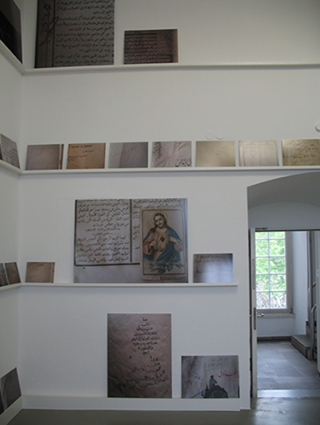
2. Artists and Authors
OOO’s flattened hierarchies of ontologically equal objects might also offer new ways of understanding the relationships of parts to wholes present at all biennials. In the OOO universe the series, the individual editions, and the discrete artworks on display would all become ontologically equal despite their differences in scale. In this system the tensions of exhibitionary control over artworks and authorship of meaning would be realigned, especially the relationships between artists-as-creators and curators-as-exhibition-auteurs, a common role at biennials where the institution’s selection of a new “author” for each edition signifies the values of the contemporary art system: progress and creative individuality, the embodiment of complicated behind-the-scenes machinations, and the safeguarding of the biennial institution as an ever-powerful agent of innovation. Through an approach based on OOO, the curation of any object, however, regardless of curatorial design and intent, ideological outlook, or even institutional structures, would not “harm” the essence of the object or change its status as an autonomous entity. The artwork exists in this context in a space between malleable instrument and independent creation. Likewise, individual artworks do not overwhelm the objecthood of the exhibition. Artworks- and exhibitions-as-objects flow in and out of each other, differently scaled objects able to freely combine and recombine in multiple ways over time. In this perspective, for example, had El Chaco been moved to Kassel the (colonialist) action of the curator, itself now an object, would not have diminished the ontological status of the meteorite, but rather would have co-existed alongside it.
3. Spectators
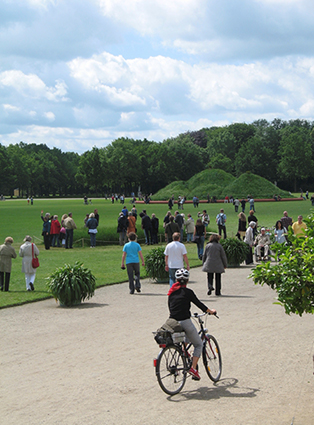
OOO’s conception of human subjects as ontological objects poses the question of the essential relationship of spectators to biennial exhibitions. With no special (human) access, spectators must assume that in even the most condensed display (like The Brain) or controlled environment, they will only ever be able to approach the singular and aggregated artworks, the broader exhibition-object, and the overarching biennial institution incompletely and thus speculatively. The global scale and openended format of dOCUMENTA(13) drove home this point in visceral ways; no visitor could complete or consume an ideal exhibition experience from the event. The acknowledgement of this reality by spectators, curators, and artists, that for the viewer some parts of the exhibition must always remain hidden, and conversely that most visitors will create singular experiences with the exhibition, could be a potential location not just for a new kind of leveling, simultaneity, or “democracy,” but of unprecedented innovation and independence. What might it mean if biennials encouraged not coherence, completeness, or even shared experience, but were designed with the ontological inaccessibility of objects with each other in mind? What would it mean to approach an exhibition with no desire or false sense of need to “consume” it? Would curators, spectators, artists, artworks, spaces, and environments retain more individual agency and freedom in such a scheme and thus interact with each other in more productive, less hierarchical or circumscribed ways? Would the one-directional process of creation, presentation, and reception, and its concomitant roles, breakdown? Could a spectator be or become something else?
4. The Past, Present, and Future
While the nature of agency, impact, and effect in OOO is much debated, all objects can approach each other to various degrees. Objects of animate and inanimate or material and immaterial varieties have a similar potential to affect “reality.” Exhibitions and biennials, even those existing simultaneously, have their own individual agency they exert upon reality, although the nature of that impact cannot be fully understood or is largely inaccessible to the spectator. At the most basic level, all biennials affect reality by creating a sense of time and space around themselves. In the case of the biennial as a series of diachronic moments, the objecthood of each edition means that no exhibition dies, but rather exists concurrently with the materialized exhibition as historical object or future object. All of these temporally different exhibition-objects interact, merge, and withdraw affecting each other and reality. And while differences of power are infrequently discussed in OOO, the potential scale of the biennial as an ongoing temporal, spatial, and conceptual existence necessitates that we consider the future of the format with great care. Their global proliferation, including the continued “outreach” of international European biennials into other localities and alternate temporalities, as well as the simultaneous grounding of many biennials in repeat locations asks us to consider potential political, economic, environmental, social, and individual impacts and to remember that many can only be conceived through speculation. Most important is the liberating element of this speculative character. With no identifiable or quantifiable functionality that we can or must attach to these always complete but ever-inaccessible objects, we are freed up to imagine unlimited and unbounded aesthetic situations that possess both openness and relativity, but which are also “real.” We can envision the exhibition that cannot yet be conceived, but exists nonetheless. Against the notion of the biennial as an atavistic format tied to neoliberal forces or irrelevant concepts of progress, a new object-based orientation may paradoxically allow us to begin to reconfigure the biennial’s concretized concepts and ossified structures.
Kathryn M. Floyd is Associate Professor of Art History at Auburn University (USA) where she teaches the history of modern and contemporary art. Her research focuses on the history and theory of art exhibitions.
[1] The archive of the exhibition’s website is available at: http://d13.documenta.de.
[2] Carolyn Christov-Bakargiev, “dOCUMENTA(13).” The Guidebook (Ostfildern: Hatje Cantz, 2012): 2.
[3] Roberta Smith, “Art Show as Unruly Organism,” New York Times (June 15, 2012): C21.
[4] The exhibition’s documentation of the controversy is available at: http://d13.documenta.de/de/#/research/research/view/el-chaco.
[5] Blogs and other websites also tracked the situation. See Michael Lithgow, “Postcolonial Politics Threatens Integrity of Documenta 13 Art Exhibition” Art Threat (January 22, 2012), http://artthreat.net/2012/01/postcolonial-documenta-13-el-chaco-campo-del-cieol-moqoit-aboriginal/. See also, Peter Gärtner, “Kosmos, Kunst, und Kolonialismus,” Quetzal: Politik und Kultur in Lateinamerika (June 2012), http://www.quetzal-leipzig.de/lateinamerika/argentinien/kunst-documenta-argentinien-kolonialismus-metorit-19093.html. In a video of 6 June 2012 press conference, a protester from the Campo del Cielo Collective confronts Christov-Bakargiev: http://www.youtube.com/watch?v=9VJkD1rd3QA.
[6] Carolyn Christov-Bakargiev, “The dance was very frenetic, lively, rattling, clanging, rolling, contorted, and lasted for a long time,” The Book of Books, (Ostfildern: Hatje Cantz, 2012): 30.
[7] For an overview of the various positions of OOO see Levi R. Bryant, Nick Srnicek and Graham Harman, eds. The Speculative Turn: Continental Materialism and Realism (Melbourne: re.press, 2011). A very readable account of OOO’s foundations and variations is Ian Bogost, Alien Phenomenology, or, What it’s Like to be a Thing (Minneapolis: University of Minnesota Press, 2012).
[8] Graham Harmon, “The Third Table” The Book of Books, (Ostfildern: Hatje Cantz, 2012): 540-542.
[9] Graham Harman, Guerrilla Metaphysics: Phenomenology and the Carpentry of Things (Chicago: Open Court Press, 2005): 76.
[10] Harmon, “The Third Table,” 540.
[11] Harmon, “The Third Table,” 541
[12] See Levi R. Bryant, The Democracy of Objects (Ann Arbor: Open Humanities Press, 2011).
[13] See, for example, Jane Bennett, Vibrant Matter: A Political Ecology of Things (Durham: Duke University Press, 2010) as well as Timothy Morton, Hyperobjects: Philosophy and Ecology after the End of the World (Minneapolis: University of Minnesota, 2013).
[14] Steven Henry Madoff, “Why Curator Carolyn Christov-Bakargiev’s Documenta May Be the Most Important Exhibition of the 21st Century” Modern Painters (Blouin ArtInfo) (July 5, 2012), http://www.blouinartinfo.com/news/story/811949/why-curator-carolyn-christov-bakargievs-documenta-may-be-the-most-important-exhibition-of-the-21st-century.
[15] Daniel Birnbaum, “Documenta 13,” Artforum (October, 2012): 255.
[16] See part two of the dOCUMENTA(13) catalogue called The Logbook (Ostfildern: Hatje Cantz, 2012): 138-147.









